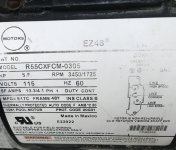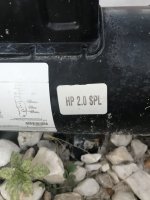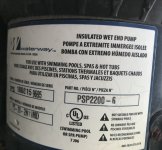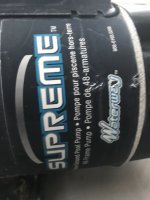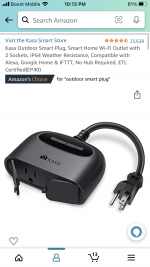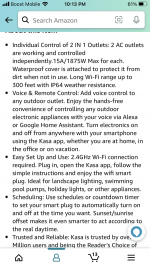- Feb 23, 2022
- 52
- Pool Size
- 5000
- Surface
- Fiberglass
- Chlorine
- Salt Water Generator
- SWG Type
- CircuPool RJ-30
Two days post SLAM process, It worked great, pool is clear.
My Test results with Taylor 2005 and FAS-DPD
5 FC
0.5 or less CC
7.6 PH
100 TA
300 CH
40 CYA
79 degrees test water
0.05 csi
My wife also took and tested water at pool store.
There results were similar
except they put CA at 170
So to my call for help. I have read through a few different SWG installs, seems like everyone does it a little different
Here is my proposed game plan. Please feel free to correct any mistakes I might make. I'm planning to install the SWG today but continuing to sanitize with bleach and not turn it on until I Increase the CYA levels and dissolve the salt. Of course I forgot to ask my wife to get the saltwater test strips yesterday so I'm not putting the salt in just yet. Circupool RJ 30. Manual says to dissolve salt then start install. Curious if I can do it this way? Also, I am just plugging it in to the same outlet my pool pump plugs into. I am assuming its a 110 outlet if its a standard three prong outdoor outlet. Am I assuming correctly. That will require me to adjust the SWG jumper wires.
Steps
1: Vacuum entire pool
2: Turn of Pump
3. Close return valve
4. Open filter valve to release pressure then drain plug to drain water
5. cut chlorinator out, wish they just used screw fittings
6. Test fit pvc fittings, purchased the vertical install kit from discount salt pools
7. Glue in pvc, flow switch, and SWG.
8. Mount control panel to side of house
9. Close filter drain plug
10. Open pump cover and fill with water and close
11. Open return valve
12. Turn on Pump
13. Let water spray out of air valve
14. Close Valve
15. Let kids swim if Chlorine has come into safe levels
16. Test water for current salt PPM, CYA, and FC
17. Run pump, increase cya with filter sock,Brush sides
18. Continue running pump, add salt and brush to dissolve, use salt test strips for test
19. Can I use low speed for the 24 hours of dissolving time?
20. Program SWG to take over sanitizing from there.
21. Drink a cold Beer!!
My Test results with Taylor 2005 and FAS-DPD
5 FC
0.5 or less CC
7.6 PH
100 TA
300 CH
40 CYA
79 degrees test water
0.05 csi
My wife also took and tested water at pool store.
There results were similar
except they put CA at 170
So to my call for help. I have read through a few different SWG installs, seems like everyone does it a little different
Here is my proposed game plan. Please feel free to correct any mistakes I might make. I'm planning to install the SWG today but continuing to sanitize with bleach and not turn it on until I Increase the CYA levels and dissolve the salt. Of course I forgot to ask my wife to get the saltwater test strips yesterday so I'm not putting the salt in just yet. Circupool RJ 30. Manual says to dissolve salt then start install. Curious if I can do it this way? Also, I am just plugging it in to the same outlet my pool pump plugs into. I am assuming its a 110 outlet if its a standard three prong outdoor outlet. Am I assuming correctly. That will require me to adjust the SWG jumper wires.
Steps
1: Vacuum entire pool
2: Turn of Pump
3. Close return valve
4. Open filter valve to release pressure then drain plug to drain water
5. cut chlorinator out, wish they just used screw fittings
6. Test fit pvc fittings, purchased the vertical install kit from discount salt pools
7. Glue in pvc, flow switch, and SWG.
8. Mount control panel to side of house
9. Close filter drain plug
10. Open pump cover and fill with water and close
11. Open return valve
12. Turn on Pump
13. Let water spray out of air valve
14. Close Valve
15. Let kids swim if Chlorine has come into safe levels
16. Test water for current salt PPM, CYA, and FC
17. Run pump, increase cya with filter sock,Brush sides
18. Continue running pump, add salt and brush to dissolve, use salt test strips for test
19. Can I use low speed for the 24 hours of dissolving time?
20. Program SWG to take over sanitizing from there.
21. Drink a cold Beer!!




